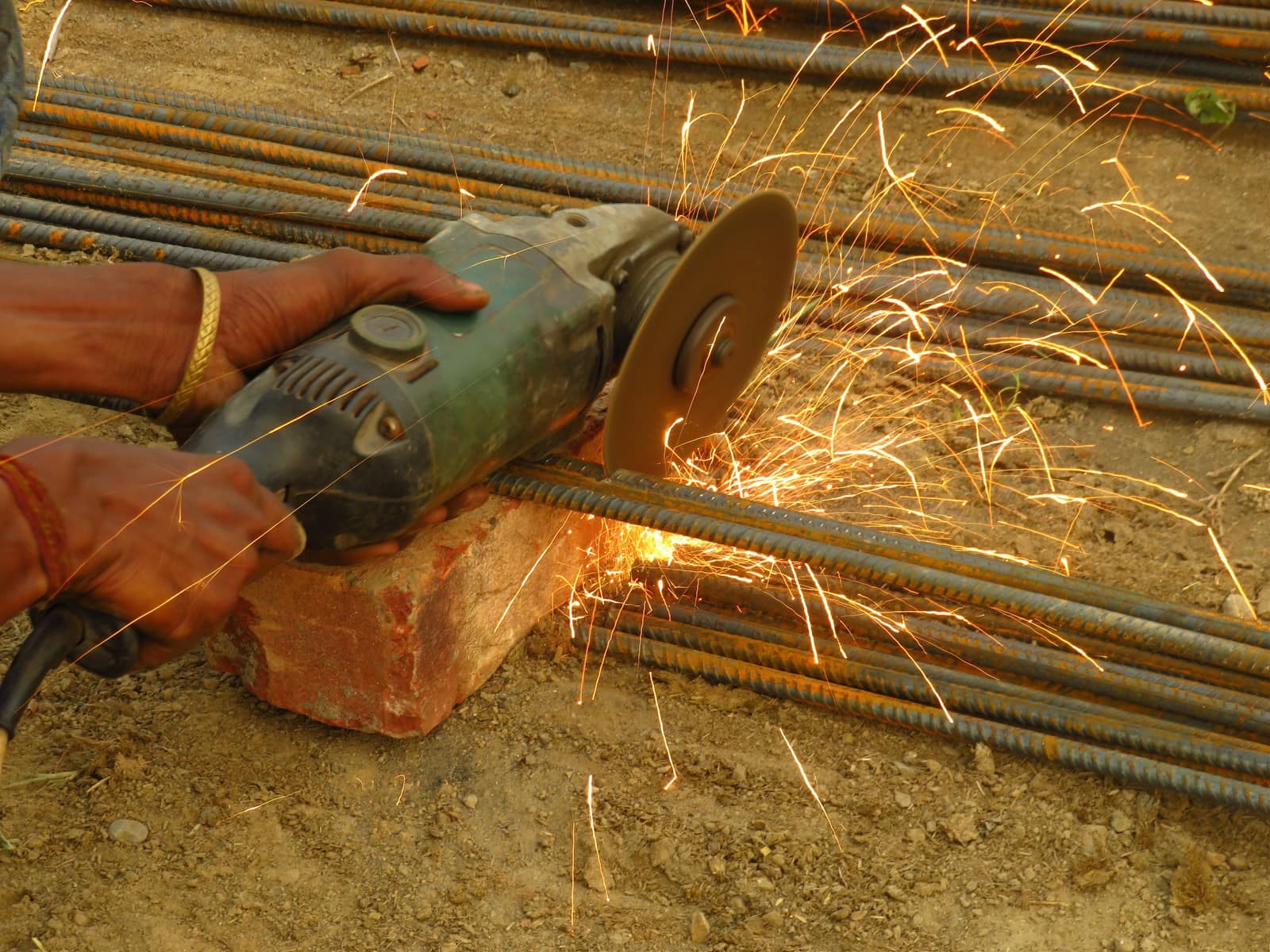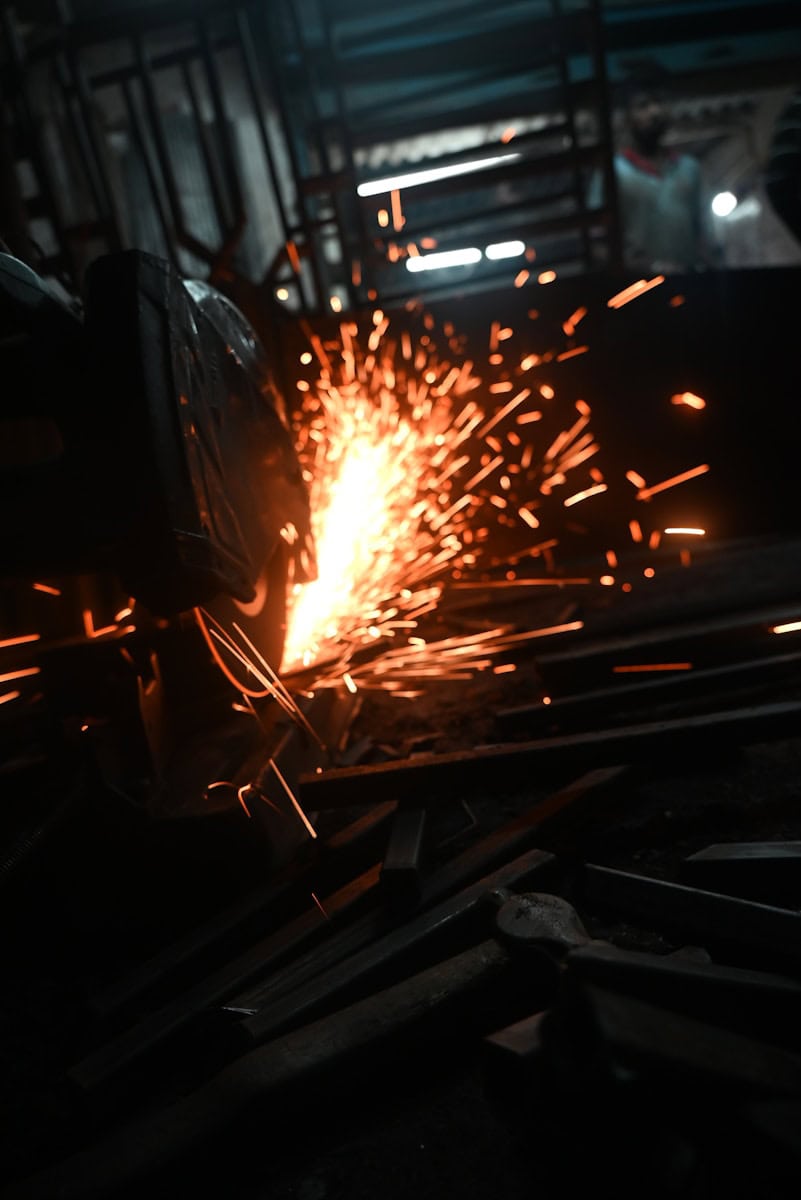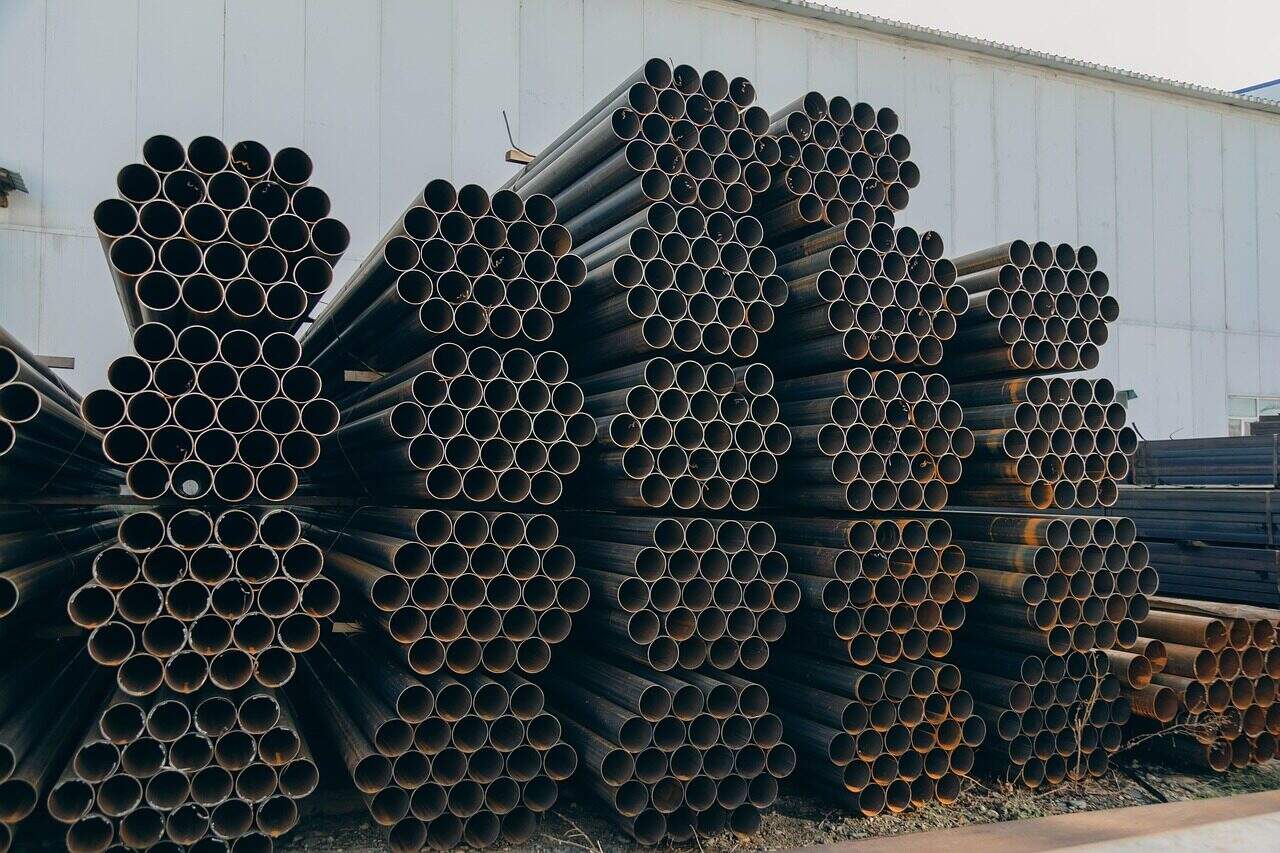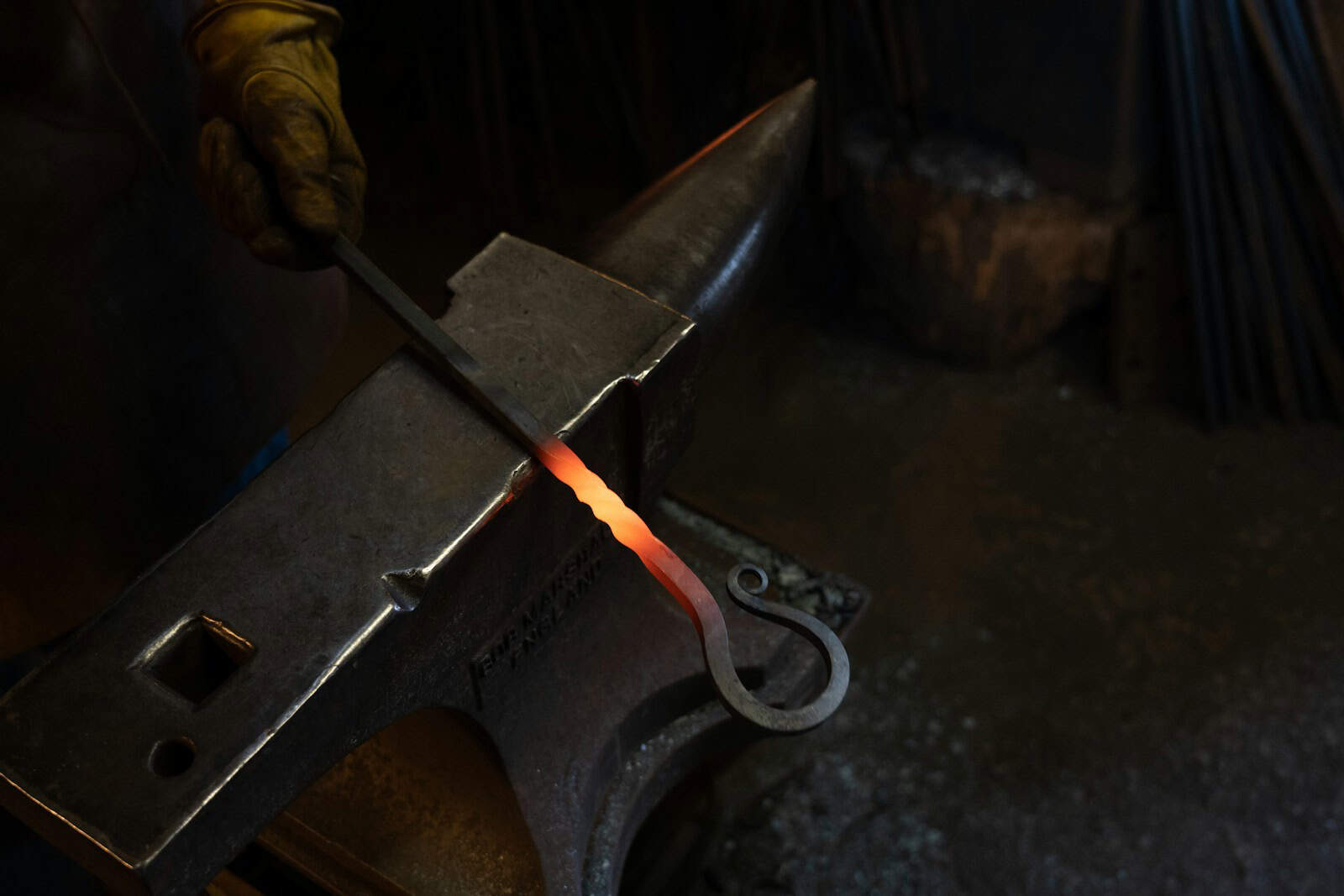A Guide to Steel Annealing
Steel annealing is a heating process that changes the tiny structure inside steel to improve how it works. The main goals of this process are important for working with metal: to make steel easier to bend, soften it for shaping, reduce stress inside the metal, and make it easier to cut. Without proper annealing, many steel products we use every day—like car parts, airplane pieces, hand tools, and building beams—would break easily, work poorly, or cost too much to make. This guide explains the science behind annealing, breaks down different factory processes, shows how to control important steps, and gives practical help for fixing common problems. Understanding these ideas is important for any engineer or worker who wants to master how materials work.
The Science of Annealing
To really understand annealing, we need to look at what happens inside steel at a very small level. The process is not just heating and cooling; it is a careful change of the steel’s crystal structure. This change can be broken down into three clear stages: recovery, recrystallization, and grain growth. The success of any annealing cycle depends on carefully managing the movement through these stages. Picturing this change is key; a simple diagram would show the shift from a twisted, stretched grain structure typical of cold-worked steel to a uniform, even one after successful recrystallization.
Stage 1: Recovery
The first stage, recovery, begins as the steel is heated. This stage happens at temperatures below the steel’s critical change point (A1). Its main purpose is stress relief. Earlier manufacturing processes like cold rolling, drawing, or forging create many defects called dislocations in the steel’s crystal structure. These dislocations are like tiny tangles that make the material hard and brittle.
During the recovery stage, the added heat energy allows these dislocations to move, rearrange, and cancel each other out. This process greatly reduces the internal stresses stored within the material. However, the overall grain structure and boundaries stay mostly unchanged. As a result, recovery provides a big increase in size stability with only a small reduction in hardness and strength. It is the initial “untangling” of the tiny structure before bigger changes happen.

Stage 2: Recrystallization
Recrystallization is the most important stage of the annealing process and causes the biggest changes in how the metal behaves. As the temperature rises to the recrystallization temperature, which is typically between 40% and 60% of the steel’s absolute melting point (measured in Kelvin), a major change begins.
At this point, new, completely stress-free grains begin to form at points of high internal energy, such as the boundaries of the old, damaged grains. These new grains grow and replace the original, twisted crystal structure until the entire tiny structure has been replaced. The result is a material with a completely new set of grains that are equal in size (roughly equal in all directions) and free of the internal strain from earlier cold work. This is the process that greatly reduces the steel’s hardness and strength while greatly increasing its ability to bend and toughness, making it suitable for further shaping or use.
Stage 3: Grain Growth
The final stage, grain growth, happens if the steel is held at the annealing temperature for too long after recrystallization is complete, a condition known as over-soaking. The heat energy continues to drive tiny structural change, but instead of forming new grains, the existing recrystallized grains begin to merge and grow larger.
This process further reduces strength and hardness, but it often comes with bad results. Very large grains can lead to a poor, rough surface finish known as “orange peel” when the material is later formed. More importantly, large grain structures can decrease the material’s ability to resist breaking, making it more likely to fail suddenly, especially at low temperatures. Therefore, controlling grain growth by carefully managing soaking time and temperature is a critical part of a successful annealing cycle.
- Recovery: Reduces internal stress.
- Recrystallization: Forms new, strain-free grains, increasing bendability and softness.
- Grain Growth: Enlarges grains, possibly reducing toughness and surface quality.
Steel Annealing Processes
Annealing” is a general term that includes a family of specific traitements thermiques. The process chosen depends entirely on the steel’s makeup, its condition before treatment, and the desired final properties. Each process uses a unique combination of temperature, holding time, and cooling rate to achieve a specific tiny structural outcome. Understanding the differences between these processes is important for selecting the correct treatment for a given use. Below is a breakdown of the most common factory annealing processes.
Full Annealing
Full annealing is designed to produce the softest, most bendable, and most workable condition possible for low and medium-carbon steels. It is often a preparation step for severe cold forming operations like deep drawing.
- Goal: To achieve maximum softness and bendability.
- Process: The steel is heated to a temperature about 50°C (90°F) above the upper critical temperature (A3 for hypoeutectoid steels, Acm for hypereutectoid steels). It is held at this temperature long enough to ensure the entire part changes into a uniform austenite phase. The key to full annealing is the following very slow cooling, typically done by shutting off the furnace and allowing the parts to cool with the furnace’s heat mass.
- Result: This slow cooling allows the austenite to change into a coarse pearlite and ferrite tiny structure. This coarse structure has low hardness and high bendability.

Process Annealing
Process annealing, also known as intermediate annealing or sub-critical annealing, is used to restore bendability to a part that has been hardened by cold working. It is often done as a middle step in a multi-stage manufacturing process, such as wire drawing or sheet metal stamping, allowing for further bending without breaking.
- Goal: To restore bendability for further processing.
- Process: The steel is heated to a temperature just below the lower critical temperature (A1), typically in the range of 550-650°C (1022-1202°F). Since the temperature stays below the A1 line, no phase change to austenite happens. The process mainly involves recovery and recrystallization of the ferrite phase. Slow cooling is not required, and parts are often air-cooled.
- Result: Stress is relieved, and the bent grain structure is replaced by new, equal-sized ferrite grains, restoring bendability with minimal impact on the overall phase makeup.
Spheroidizing
Spheroidizing is a specialized annealing process applied mainly to high-carbon steels (typically >0.6% C) and tool steels. The goal is not just softness but a specific tiny structure that greatly improves workability before the steel goes through its final hardening and tempering cycle.
- Goal: To produce a spheroidite structure for maximum workability.
- Process: This involves heating the steel to a temperature just below or moving around the lower critical temperature (A1) for a very long time, often 15 to 25 hours or more. This long hold allows the layered or network cementite (iron carbide) in the pearlite structure to break up and form small, rounded particles or spheroids within a soft ferrite matrix.
- Result: The resulting spheroidite structure is extremely soft and offers the least resistance to cutting tools, making difficult-to-work high-carbon steels much easier to process.
Stress Relief Annealing
Stress relief annealing is a low-temperature process whose only purpose is to reduce internal stresses locked into a component from earlier manufacturing operations such as welding, heavy machining, casting, or even quenching. These stresses can lead to size instability, warping over time, or early failure.
- Goal: To reduce internal stresses with minimal change to mechanical properties.
- Process: The part is heated to a temperature well below the lower critical point (A1), typically between 480-650°C (900-1200°F). It is held at this temperature long enough for the component to be evenly heated, allowing for stress reduction through the recovery process. The part must then be cooled slowly to avoid creating new heat stresses.
- Result: The component becomes more size-stable and less likely to warp or crack, with little to no change in its hardness or strength.
Table 1: Comparative Analysis of Major Steel Annealing Processes
| Process Type | Typical Temperature Range (Relative to A1, A3) | Cooling Method | Resulting Microstructure | Key Property Change | Best For (Application) |
| Full Annealing | Above A3/Acm | Very Slow (Furnace Cool) | Coarse Pearlite & Ferrite | Maximum Softness & Bendability | Preparing low/medium aciers au carbone for severe cold forming. |
| Process Annealing | Below A1 | Air Cool or Furnace Cool | Recrystallized Ferrite | Restored Bendability | In-between steps of multi-stage drawing or stamping operations. |
| Spheroidizing | Around A1 (prolonged hold) | Slow Cool | Spheroidite (Cementite spheres in Ferrite) | Maximum Workability | Preparing high-carbon (>0.6% C) and tool steels for machining. |
| Stress Relief | Well Below A1 | Slow Cool | Tempered Martensite (if hardened) or unchanged | Reduced Internal Stresses | Stabilizing welded fabrications, cast parts, or heavily machined components. |
Controlling Process Parameters
Successful annealing is a science of exact control. Small changes in any of the main process variables can lead to very different tiny structures and mechanical properties, resulting in failed parts and wasted materials. The three pillars of control in any annealing cycle are temperature, soaking time, and cooling rate. Mastering these variables is important for achieving consistent and predictable results.

The Role of Temperature
Temperature is probably the most important factor in any processus de traitement thermique. It decides which phase changes happen and the final tiny structure of the steel. The Iron-Carbon phase diagram serves as the metallurgist’s roadmap, clearly defining the critical temperatures (A1, A3, Acm) at which these changes begin and end for different carbon contents.
Heating to just below A1 results in stress relief and recrystallization without a phase change. Heating above A3 or Acm for a full anneal ensures the complete change to austenite. Exact temperature control is necessary. This requires accurately set furnace control systems, temperature measuring devices, and thermocouples. For critical uses, thermocouples should be placed directly on the workpiece or a representative test piece, not just measuring the surrounding furnace air, to ensure the part itself reaches the target temperature.
Importance of Soaking Time
Once the steel reaches the target annealing temperature, it must be held there for a specific period. This is known as soaking or holding time. The purpose of soaking is two-fold: first, to ensure that the temperature is even throughout the entire cross-section of the part, from the surface to the core; and second, to allow enough time for the desired metallurgical changes, like austenitization or recrystallization, to complete.
Soaking time is mainly based on the part’s maximum thickness. Not enough soaking will result in an incomplete change, leading to an uneven structure with hard spots. A common guideline is to soak for 1 hour per inch (25mm) of thickness, with a minimum of 30 minutes for thinner parts. However, this is just a starting point, and best times can vary based on furnace efficiency, loading density, and the specific steel alloy.
Impact of Cooling Rate
The rate at which the steel is cooled from the annealing temperature is the defining factor that separates annealing from other heat treatments like normalizing or quenching. The cooling rate directly controls the final tiny structure that forms from the austenite phase.
- Full Anneal: A very slow cooling rate, achieved by leaving the part inside the furnace as it cools, allows plenty of time for carbon movement. This results in the formation of soft, coarse tiny structures like pearlite and ferrite.
- Normalizing (for contrast): A moderate cooling rate, such as cooling in still air, provides less time for movement. This leads to a finer, more uniform pearlite structure that is slightly harder and stronger than an annealed structure.
- Quenching (for contrast): A very rapid cooling rate, achieved by plunging the part into water or oil, stops movement entirely. This traps carbon in a twisted lattice, forming martensite, an extremely hard and brittle phase.
The slow, controlled cool of annealing is what guarantees maximum softness and bendability.
Table 2: Recommended Annealing Parameters for Common Steel Grades
| Steel Grade (AISI/SAE) | Common Process | Heating Temperature (°C / °F) | Min. Soaking Time (per inch) | Recommended Cooling Method |
| 1018 (Low Carbon) | Full Anneal | 870-910°C / 1600-1670°F | 1 Hour | Furnace cool at < 50°C/hr |
| 1045 (Medium Carbon) | Full Anneal | 800-840°C / 1475-1550°F | 1 Hour | Furnace cool at < 40°C/hr |
| 4140 (Acier allié) | Full Anneal | 840-870°C / 1550-1600°F | 1 Hour | Furnace cool at < 30°C/hr |
| O1 Tool Steel | Spheroidize Anneal | 740-760°C / 1360-1400°F | 2-4 Hours | Very slow cool (< 10°C/hr) |
Troubleshooting Annealing Defects
Even with well-defined procedures, problems can arise during the annealing process. Finding and fixing these problems requires a solid understanding of the underlying metallurgical principles. In the workshop, several common issues can compromise the quality of annealed components. A frequent challenge metallurgists face is balancing the process factors to achieve the desired properties without creating new defects. This section provides an experience-based guide to identifying and solving these real-world problems.
Incomplete Softening
One of the most common failures in annealing is finding that the steel is not as soft as expected or contains hard spots. This shows that the desired tiny structural change was not fully completed.
- Causes:
- Annealing temperature was too low. The material may not have fully entered the recrystallization or austenitization range.
- Soaking time was not enough. The core of a thick part may not have reached the target temperature or had enough time to change.
- Incorrect temperature measurement. A faulty thermocouple or one placed poorly in the furnace can give a misleading reading, causing the actual part temperature to be lower than the setpoint.
- Alloy banding. In some steels, separation of alloying elements can create bands that resist softening at normal annealing temperatures.
- Solutions:
- Check the calibration of all furnace temperature measuring devices and thermocouples.
- Increase the furnace setpoint to ensure it is well within the recommended range for the specific steel grade.
- Increase the soaking time based on the maximum cross-section of the part.
- Ensure proper furnace loading to allow for even heat circulation around all parts.
Excessive Grain Growth
As previously discussed, holding the steel at the annealing temperature for too long or at too high a temperature can cause the newly formed grains to grow too large.
- Consequences: This defect is harmful to the part’s final performance. Large grains result in a rough “orange peel” surface texture after later forming operations, which may require costly grinding or polishing to correct. More importantly, an overly coarse grain structure greatly reduces the material’s ability to resist breaking and impact strength, making it more likely to fail suddenly under load.
- Solutions:
- Improve the process factors. Reduce the soaking time to the calculated minimum required for full change across the part’s cross-section.
- Reduce the annealing temperature to the lower end of the recommended range. A lower temperature will slow the speed of grain growth.
- For some steels, a two-step process involving normalizing (to refine the grain) followed by annealing can produce a fine-grained, soft structure.

Surface Defects
The high temperatures and reactive atmospheres inside a furnace can cause unwanted changes to the surface of the steel. The two most common surface defects are decarburization and oxidation.
- Decarburization: This is the loss of carbon from the surface layer of the steel. It happens when carbon atoms at the surface react with oxygen or water vapor in the furnace atmosphere. This leaves a soft, weak, low-carbon iron layer on the surface, which will not respond to later hardening treatments and has poor wear resistance.
- Oxidation (Scale): This is the formation of a thick, flaky layer of iron oxide on the surface. Scale must be removed by costly processes like sandblasting or acid pickling before further processing. It also represents a loss of material and can result in a poor surface finish.
- Solutions:
- Use a controlled furnace atmosphere. Adding an inert gas (like nitrogen or argon) or a reducing gas (like a mixture of nitrogen and hydrogen) can replace oxygen and prevent these reactions.
- For simpler furnace setups, parts can be packed in a container with spent cast iron chips or other carbon-containing material, which will consume any available oxygen.
- Apply specialized anti-scale coatings to the parts before heating.
- Minimize the time spent at high temperatures to reduce the extent of these surface reactions.
Table 3: Troubleshooting Guide for Steel Annealing
| Defect / Issue | Cause(s) potentielle(s) | Corrective Action(s) |
| Incomplete Softening | 1. Temperature too low. <br> 2. Soaking time too short. <br> 3. Incorrect temperature measurement. | 1. Increase furnace setpoint. <br> 2. Increase soak time based on thickness. <br> 3. Check temperature measuring device calibration and placement. |
| Excessive Grain Growth | 1. Temperature too high. <br> 2. Soaking time too long. | 1. Reduce annealing temperature. <br> 2. Reduce soaking time to the minimum necessary. |
| Surface Decarburization | 1. Uncontrolled furnace atmosphere (excess oxygen). <br> 2. Excessive time at high temperature. | 1. Use a controlled atmosphere (inert/reducing gas). <br> 2. Minimize time above the critical temperature. |
| Heavy Oxidation / Scale | 1. Uncontrolled furnace atmosphere. <br> 2. Furnace door leaks. | 1. Use a controlled atmosphere or anti-scale coating. <br> 2. Check and repair furnace seals. |
| Distortion / Warping | 1. Improper support in the furnace. <br> 2. Cooling or heating too rapidly. <br> 3. High leftover stresses from earlier operations. | 1. Use proper fixtures to support the part. <br> 2. Reduce heating/cooling rates. <br> 3. Add a separate stress relief cycle. |
Mastering Steel Properties
Steel annealing is far more than simply “heating and cooling.” It is a precise metallurgical process that allows us to engineer specific material properties to meet the demands of a given use. From achieving the extreme bendability needed for deep drawing a car body panel to optimizing the workability of a complex tool steel component, controlled annealing is the key. A thorough understanding of the principles discussed is what separates simple heat treating from true materials engineering.
We have explored the basic science, the factory processes, the critical controls, and the practical solutions to common problems. The key pillars for success remain constant:
- The scientific stages of Recovery, Recrystallization, and Grain Growth control the tiny structural evolution.
- The choice of a specific process—Full, Process, Spheroidizing, or Stress Relief—must align with the material and the manufacturing goal.
- The absolute control of the three critical factors—Temperature, Time, and Cooling Rate—is necessary for achieving consistent results.
By mastering these concepts, engineers, metallurgists, and manufacturers can unlock the full potential of steel. A deep understanding and precise control of the annealing process empower us to transform a standard alloy into a high-performance material, ensuring optimal performance, reliability, and manufacturability in the countless uses that form the backbone of our modern world.
- Galvanisation - Wikipédia https://en.wikipedia.org/wiki/Electroplating
- Anodisation - Wikipédia https://en.wikipedia.org/wiki/Anodizing
- ScienceDirect Topics - Traitement électrochimique des surfaces https://www.sciencedirect.com/topics/materials-science/electrochemical-surface-treatment
- ASTM International - Normes de traitement de surface https://www.astm.org/
- Association pour la protection et la performance des matériaux (AMPP) https://ampp.org/
- ASM International - Ingénierie des surfaces https://www.asminternational.org/
- NIST - Science de la mesure des matériaux https://www.nist.gov/mml
- SpringerLink - Technologie des surfaces et des revêtements https://link.springer.com/journal/11998
- Materials Today - Ingénierie des surfaces https://www.materialstoday.com/
- SAE International - Normes de traitement de surface https://www.sae.org/




